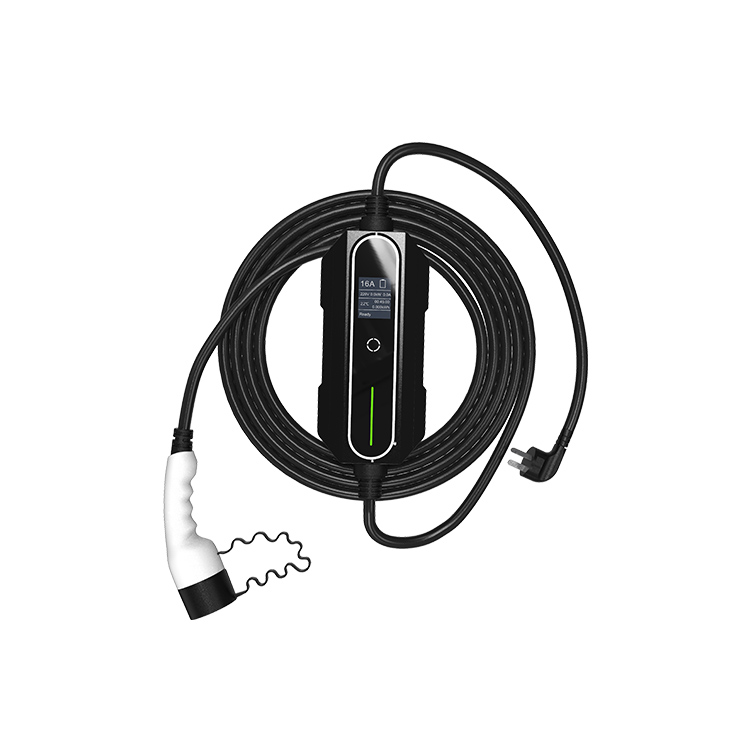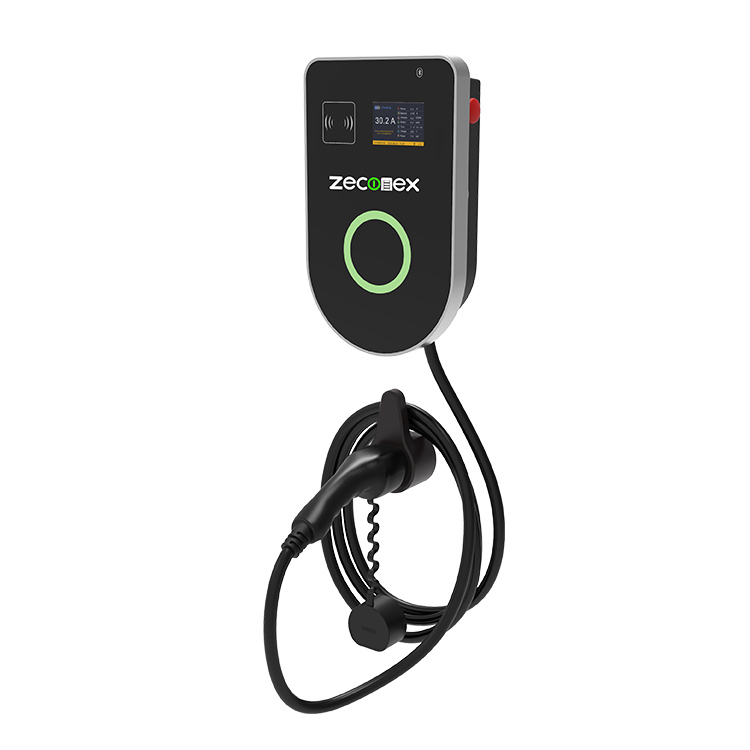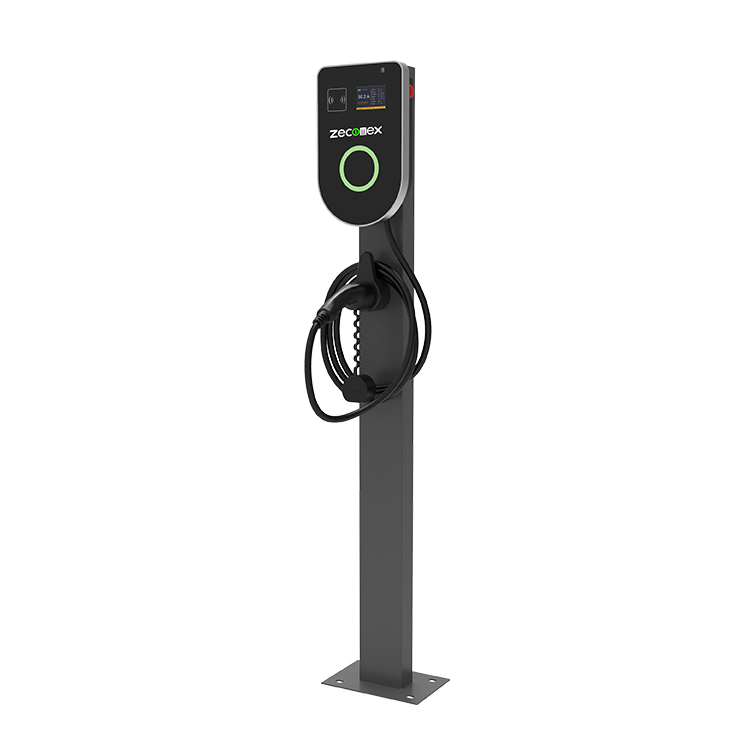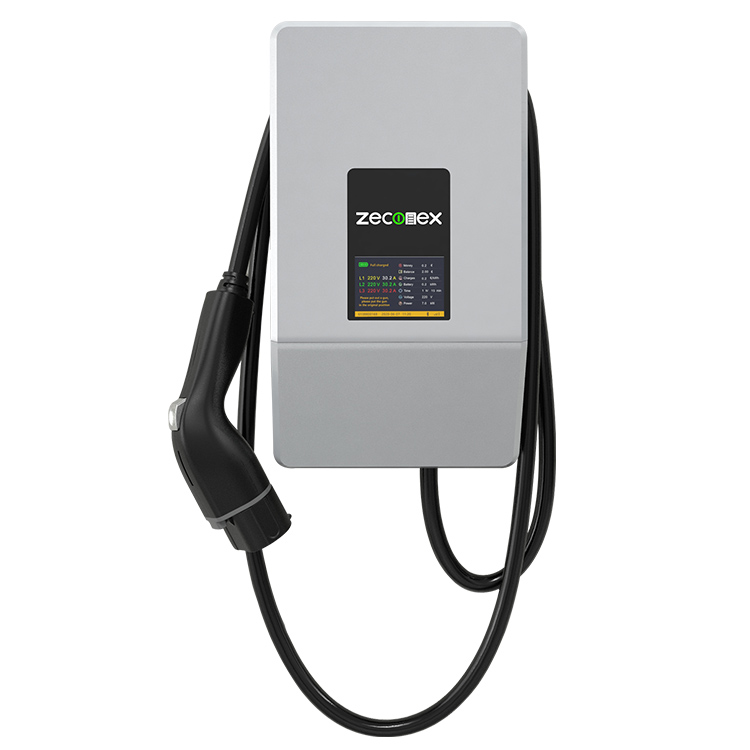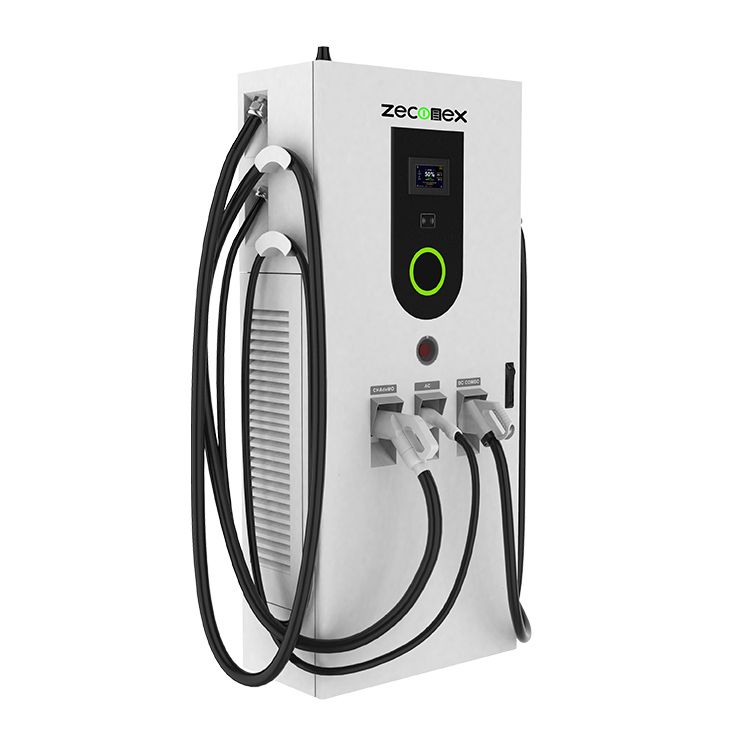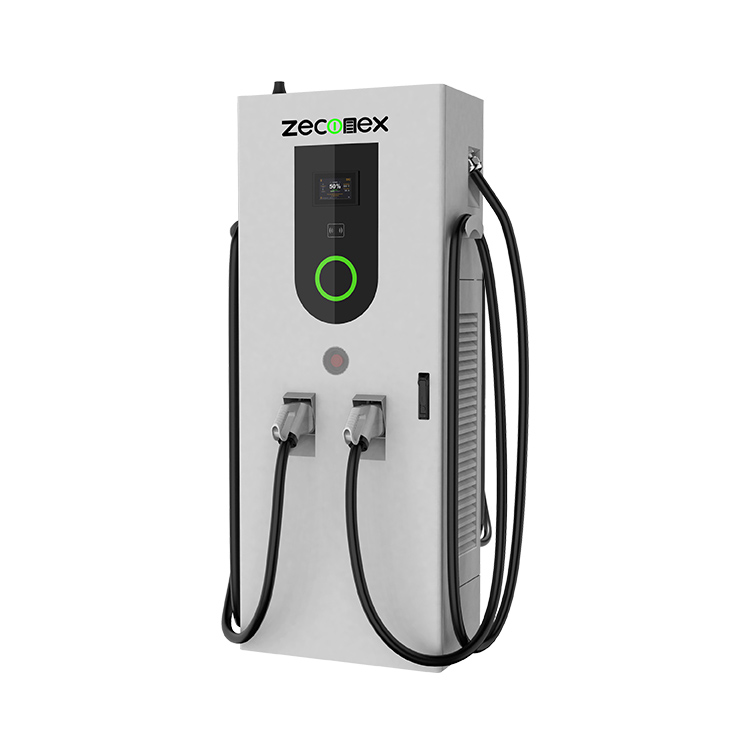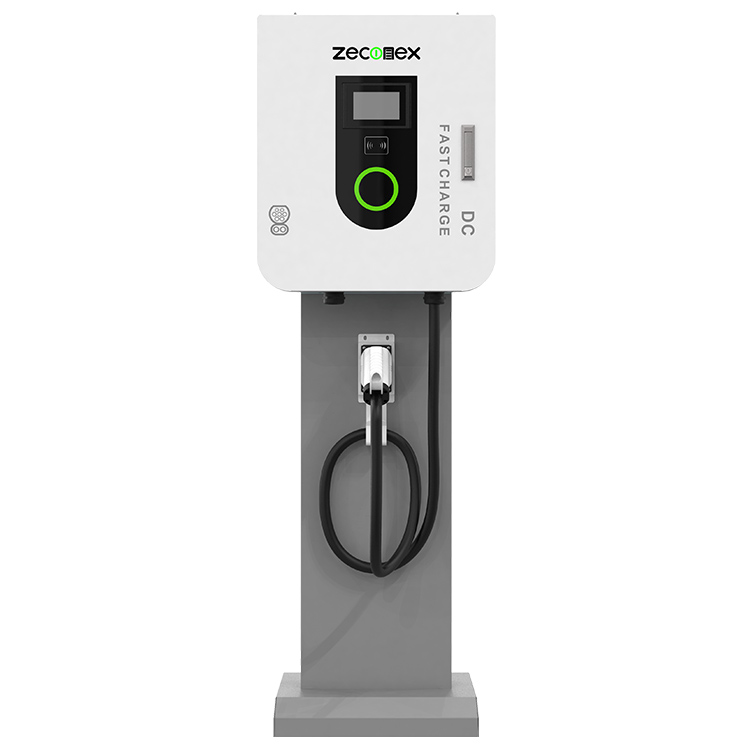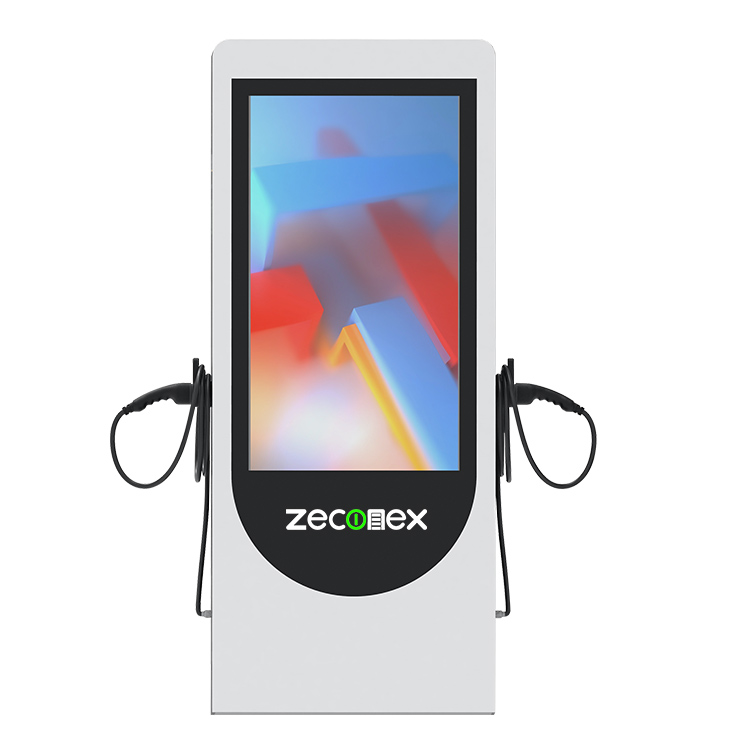Professional EV Charger Manufacturer In China
What Is An EV Charger?
Just like your mobile phones, you need to charge your electric vehicle to make them run properly. An EV charger helps to charge your electric vehicle. EV chargers help you to keep the battery of the electric vehicle full. You will be amazed to know that it is as simple as charging your cellphones.
You just need to have an EV charger and connect it to your vehicle. It actually charges your vehicle by supplying electric power to it. Note that your EV chargers can be either AC chargers or DC fast chargers.
How Does EV Chargers Work?
Basically, the EV chargers work by pulling current from either through the grid or a 240V outlet. This is how it delivers electricity to your vehicles. In other words, it is similar to plugging your car and charging it just like any other chargeable device. According to car experts, J1772 is the most common plug used in electric vehicle chargers.
On the other hand, the J1772 plug may not work with Tesla electric vehicles. You have to make sure that your EV chargers have the right plus to get your electric vehicle charged. If you own a tesla electric vehicle then there is a separate tesla wall connector. You cannot use a Tesla charger for a non-tesla electric vehicle.
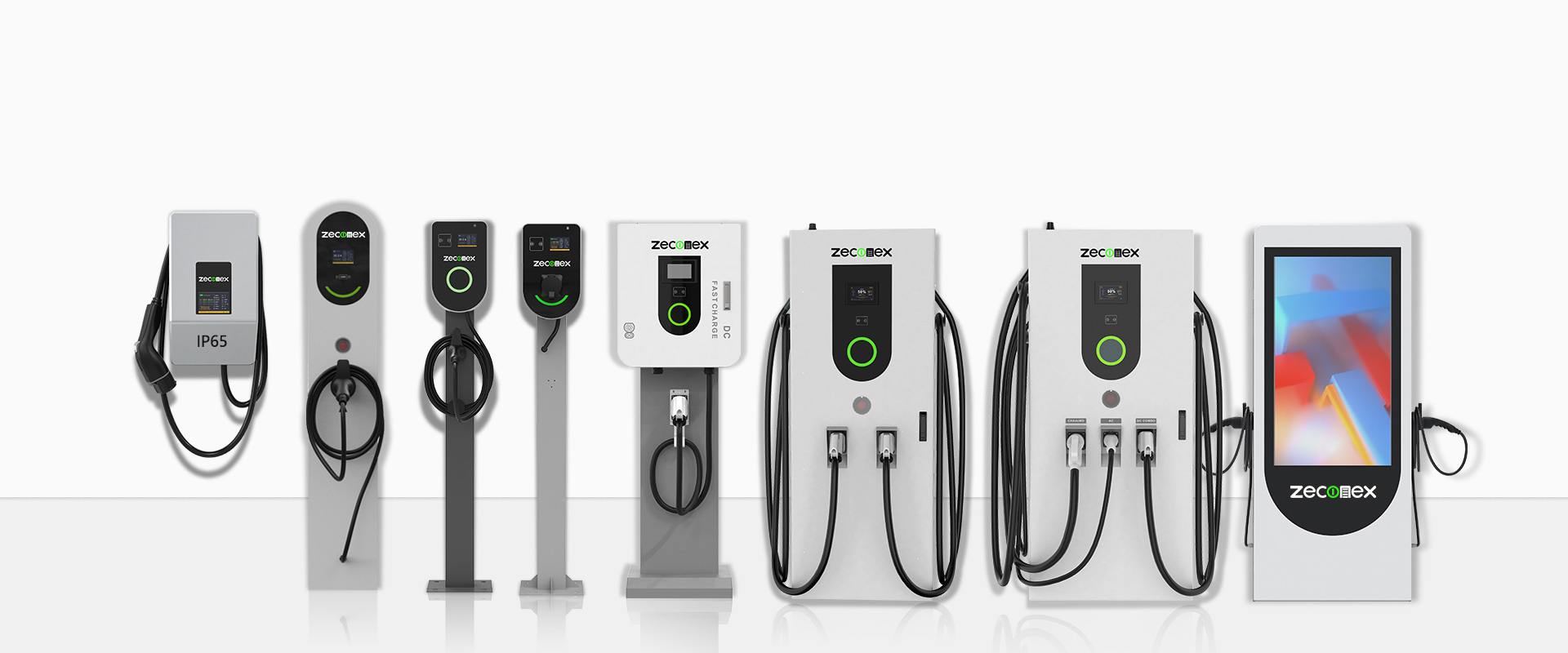
Your One-stop EV Charging Solution Provider
Zeconex is an all-in-one ev charging solution provider for different types of ev chargers, we manufacture portable ev charger, home ev charger, commercial ev charger, dc fast charger, and digital ev charger, for all types of applications and locations. What's more, zeconex offer both ev charging stations and software as well. We're your one-stop supplier for ev charging stations. Contact us for free consultation today.
Distribute Our Featured Products
Industry Applications
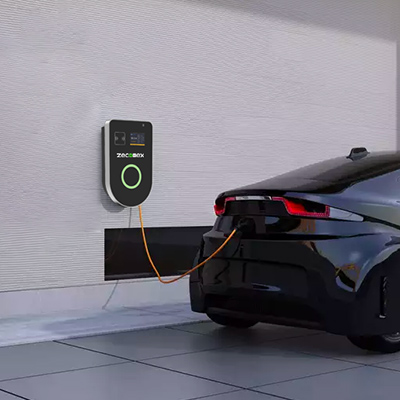
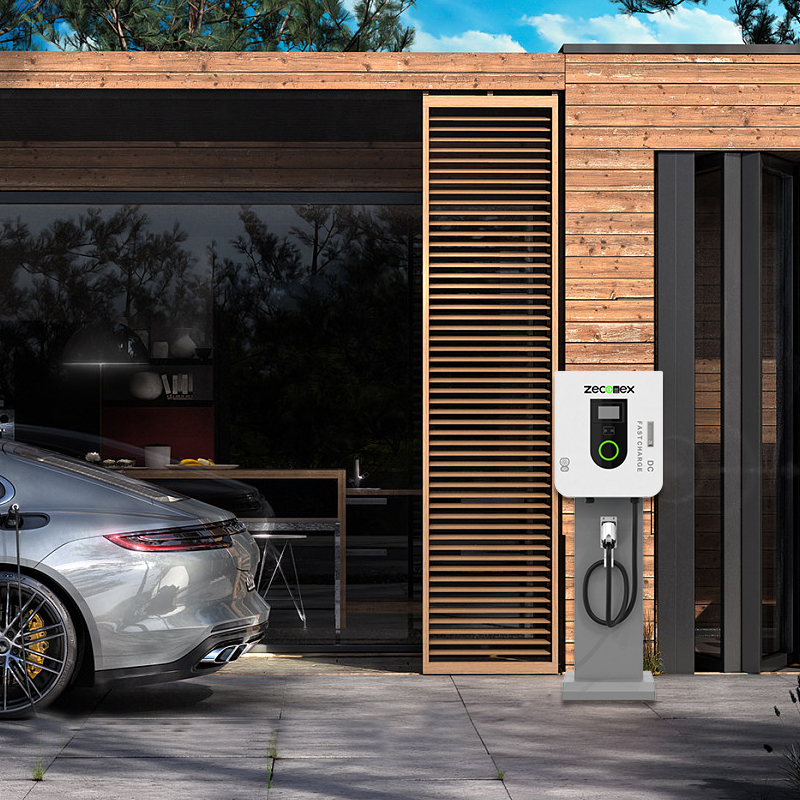
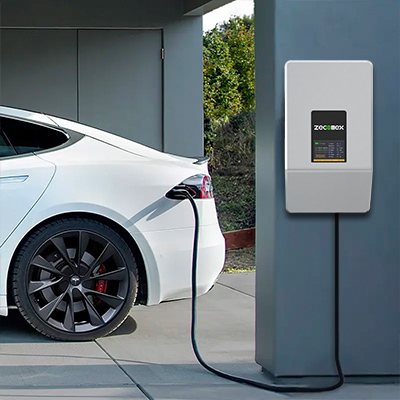
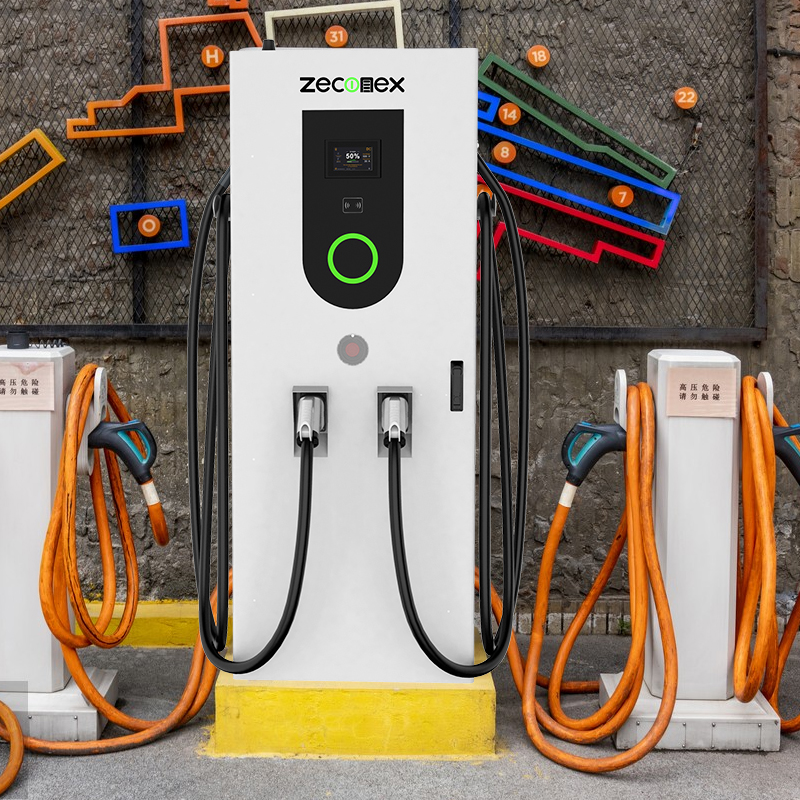
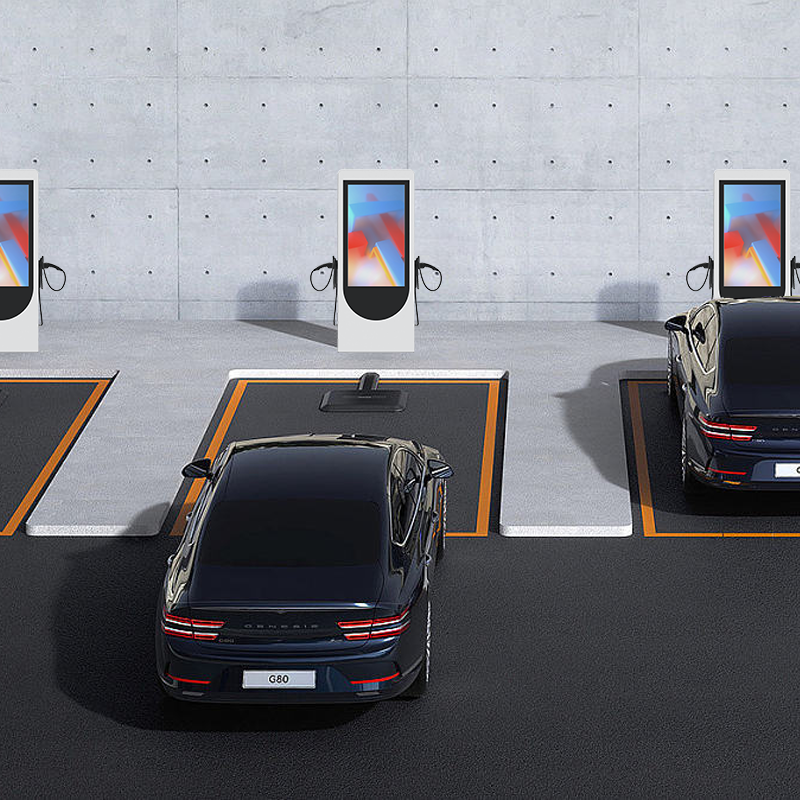
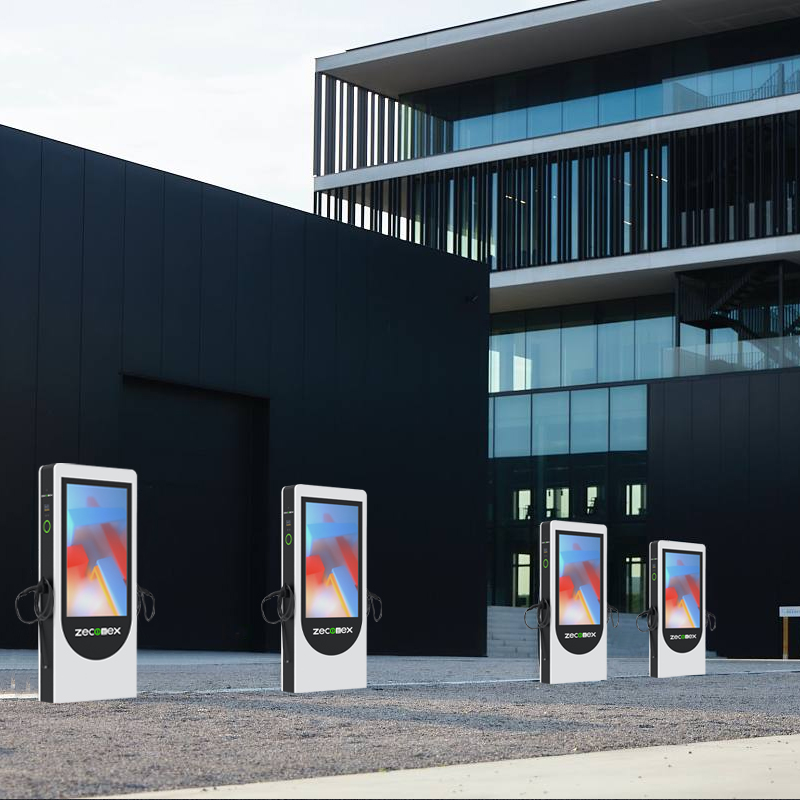
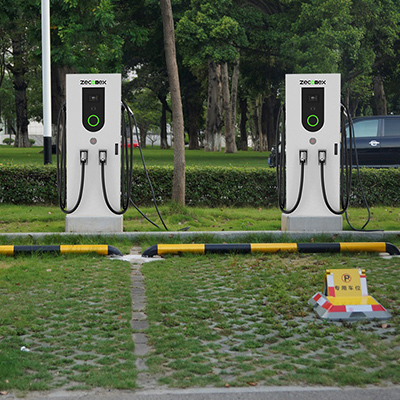
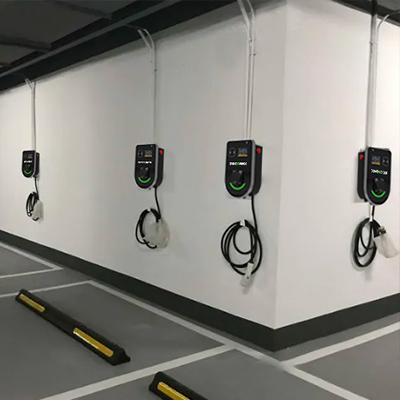
Our Solutions For Public
We provide everything that’s needed to build a charging business, from charging facilities to customer services and smart energy management solutions. You can either manage your own network of charging stations or provide the service for other charger operators. All solutions are white-labelled and can be customized to meet your customers’ needs.
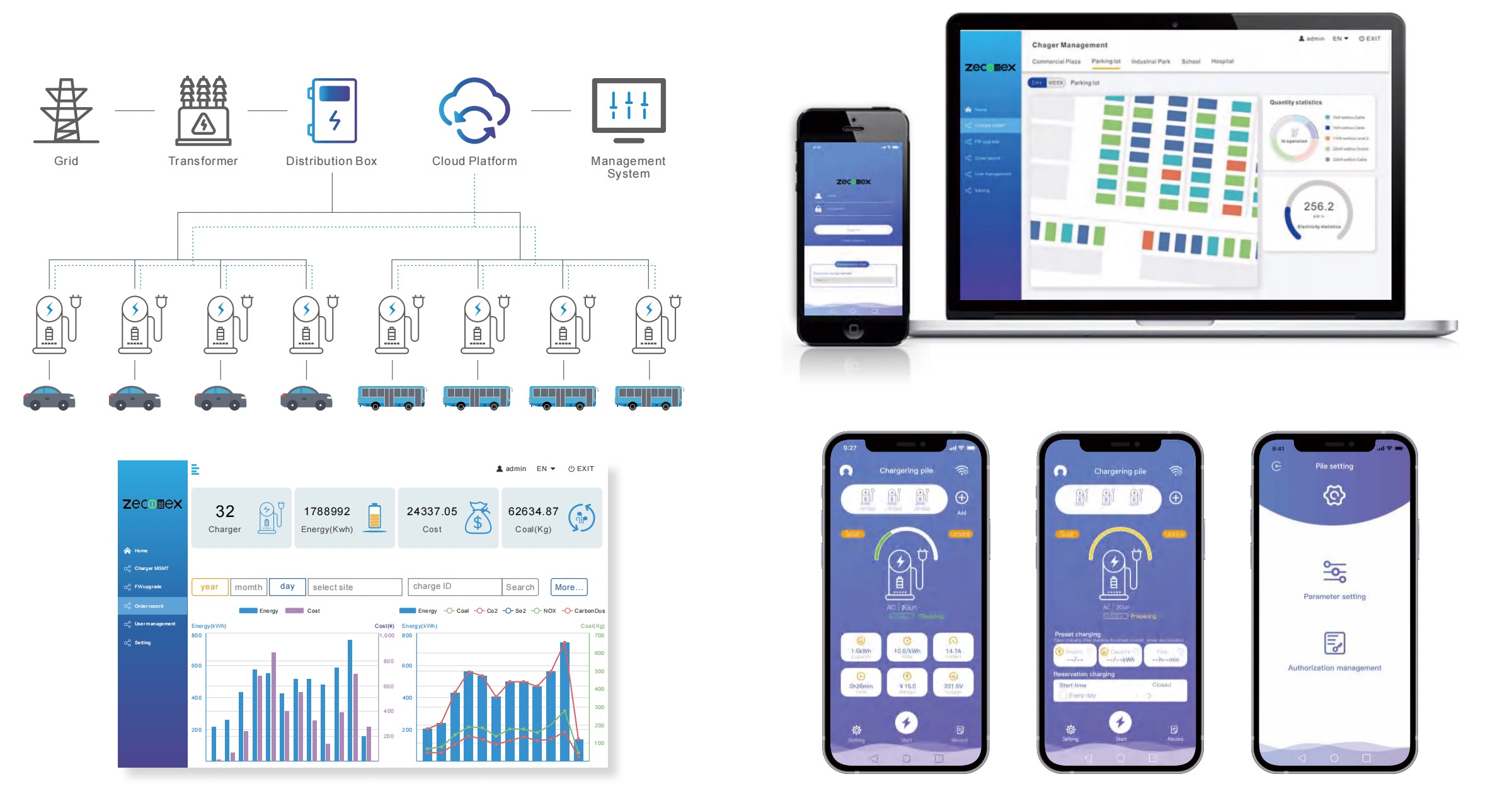
Our solutions for home use
Dynamic Load Balance
Dynamic Load Balance is a smart charging feature which balances the distribution of the total available power between chargers and other loads within the building in real time. It not only protects appliances, but also ensures EVs are fully charged at the lowest cost.
CT box monitors the total energy consumption and reports to the management system. The system controls the charging power of each individual charger automatically to avoid overloading when chargers and other loads are being used simultaneously.
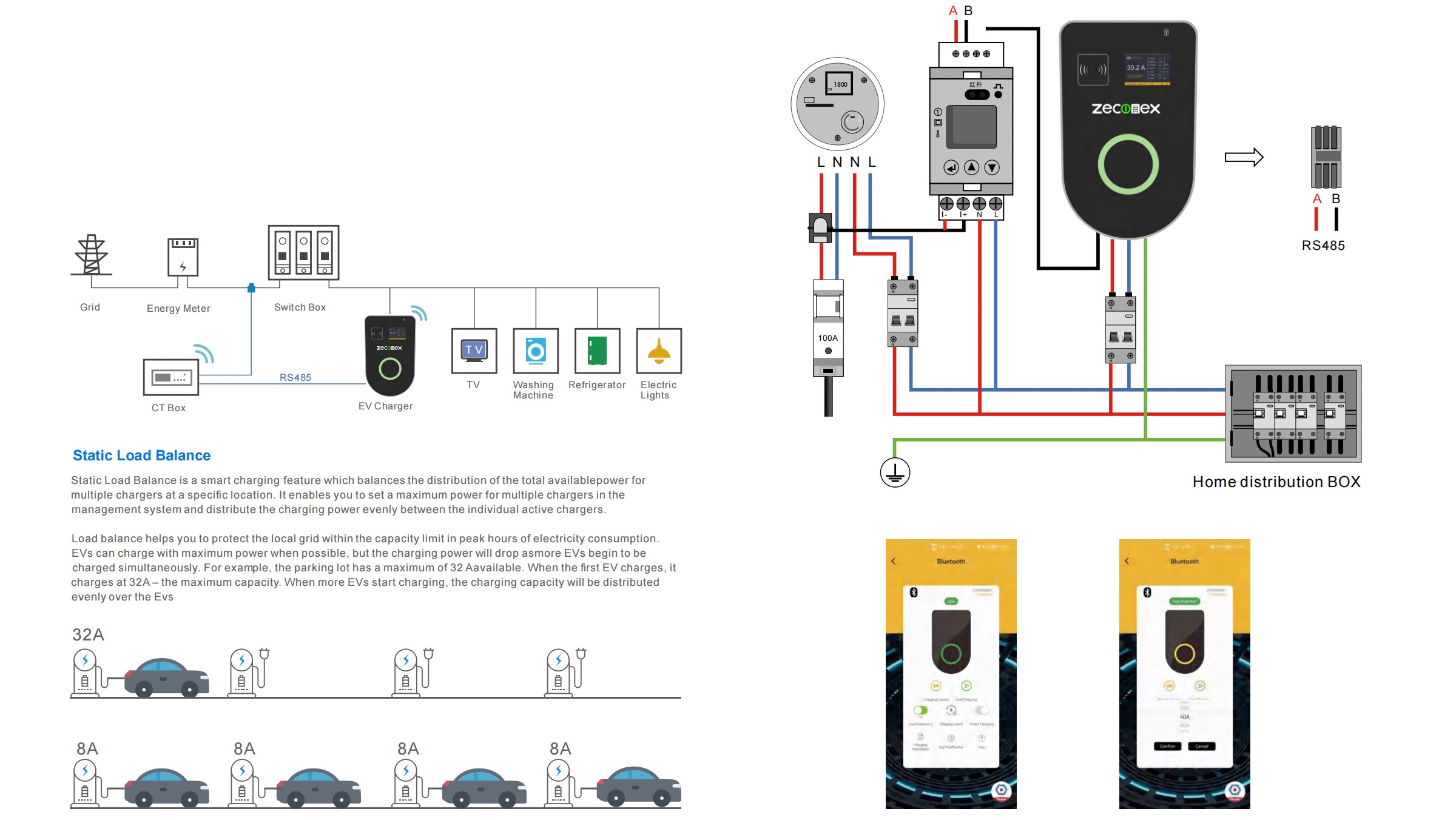
What Are Three Levels Of EV Charging?
With the growing demand for electric vehicles around the globe, you will also see an increase in the demand for electric vehicle charging stations. You can also call them car charging stations or electric vehicle supply equipment.
Basically, the EV chargers come in two main types. The first ones are residential electric charging stations that are made specifically for single-family use. While the others are commercial EV chargers that are made for organizational use.
Apart from these two main types of electric vehicle chargers, there are three levels of EV chargers. The three levels of EV charging are listed below:
1. 
Level 1 EV charging stations are 110 volts AC Charging stations. You can keep a level 1 charging station in your home. In other words, level 1 EV chargers help you with the very basic charging of your electric vehicles. For example, if you charge an empty Nissan leaf to a 100% charging level, it will take 20 hours to do it. On the other hand, if you own a Chevy volt, it will take 5-6 hours to charge 100% from a level 1 EV charger. It is important to note that level 1 EV chargers are known as portable and regular EV chargers. It will take 9 hours to charge an electric vehicle through a level 1 EV charger for a range of 40 miles.
2.
As a matter of fact, level 2 EV chargers are divided into residential types and commercial types. The residential types of level 2 EV chargers don't possess too much technology. However, these EV chargers are enough to charge your electric vehicles. Note that residential kind of level 2 EV chargers pushes electricity at 30 amps and 240 volts.
It is also important to note that level 1 residential EV chargers are typically made for families where there is only one user. The best part about them is that they are cheaper and easily available at nearby hardware stores. You can buy them for $500-$1000.
3. 
These charging stations serve as an industrial standard for your electric vehicles. You will be surprised to learn the only difference between residential and commercial EV chargers is the management option. In a commercial EV charger, the owner can easily manage how many drivers have used the EV charging station.
These are most often used at public garages, malls, offices, and large-scale buildings.
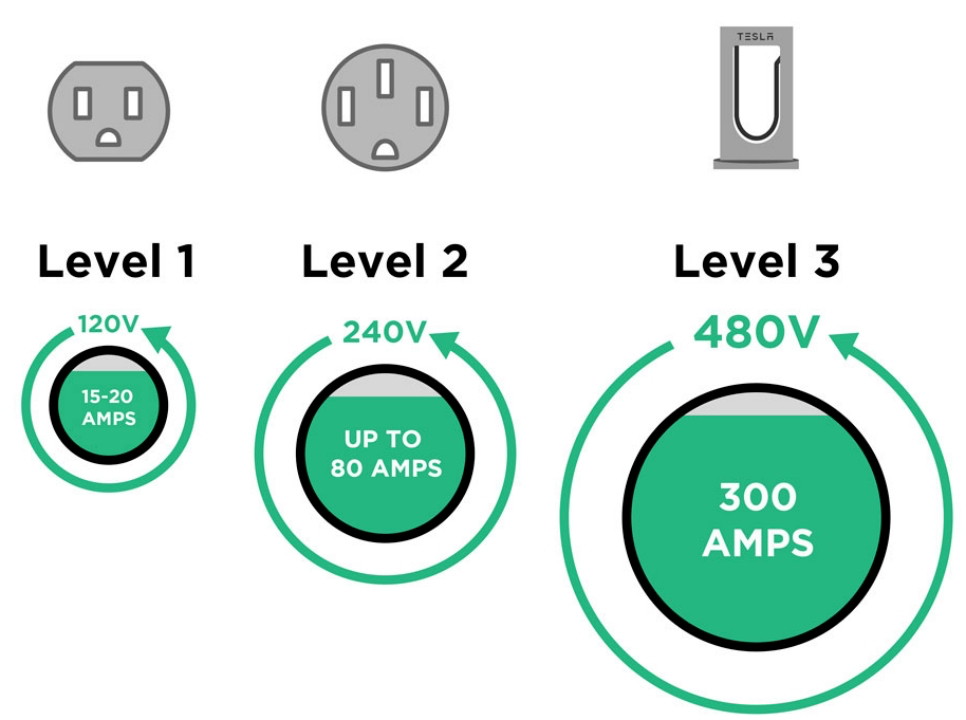
4. 
Level 3 EV chargers are also known as DC fast chargers. These EV chargers can supply the electricity in a range of 200-600 volts DC. The best part about them is that they can charge an electric vehicle within 30 minutes. This option can be considered a fantastic solution for quick charging.
However, there are some bad parts about level 3 EV Chargers. There doesn't exist any one standard for level 3 EV chargers. Moreover, they are expensive and you must have the capacity to manage such a large electricity load. These EV chargers are mostly bought by the government along the highways.
Why Choose Zeconex All-in-one EV Charging Provider?
10+ Years Factory Direct
More than 10+ years Leading Manufacture in EV Charging Industry.
Strong R&D
We keep on innovation and products developing all days to meet the edge-leading demand of the market.
One-stop EV Charger Resource
We are a total-solution provider of hardware and software, as well as one-stop customization.
Production Capacity
We own 3 factories more than 300 employees and over 20,000 square meters, each factory focus on different products line.
Certificates
We only focus on the best quality ev charging products to make sure our business partners relieved and long time working with us.
OEM/ODM Customization
Our top R&D team both in China and abroad, with rich experience in international protoco, which support us to offer OEM/ODM service for our clients all over the world.
FAQ
Frenquently Asked Questions
Charging at home is convenient and inexpensive. For those reasons, most EV drivers do more than 80% of their charging at home using either a Level 1 charger cableor a faster-charging Level 2 charger. If you have an all-electric car, a Level 2charger allows you to charge five to seven times faster compared to a Level 1 charger. If you have a plug-in hybrid, recharging with a Level 2 charger is about three times faster than it is with a Level 1. A Level 2 charger takes about five hours to fully charge a 30-kWh-battery car, which allows you to get on your way sooner. Some of the newer model BEVs have larger capacity batteries —62 kWh to 90 kWh — which can typically take4 – 10 hours to charge.
Home charging is typically done in the evenings and over night. This avoids straining the grid during periods of “peak” demand. In Maine, the peak demand period ends on weekdays at 7:00 p.m. in the winter and 5:00p.m. in the summer. You should check with your electric utility to see if they offer rates that would lower your charging costs if you charge during “off-peak” hours. And you also might want to consider consulting your car’s owner’s manual to set the default charging to off-peak. For most households and businesses, an EV’srange is more than enough for their travel needs. For instance, the average round-trip commute to work for Mainers is 24 miles, and 50% of Mainers commute less than 10miles a day. Since most new EVs have arange of 150 – 300 miles, when you chargeup overnight you can go several days before recharging and never need to stop at a public charger.
1. Charger Level
There are two types of home charging: Level1 charging and Level 2 charging. Level 1 chargers are typically included with the purchase of a new car. One end plugs into any standard 120 volt (V) outlet and the other end plugs directly into the car. Level 1 chargers are the least expensive and also the slowest way to charge your EV. It can take more than 12 hours to fully charge your car. If you routinely drive long distances, you may want to consider a Level 2 charger, which will charge your car faster. Level 2 chargers typically are sold separately from the car, although they’re often purchased at the same time. These chargers plug into a 240V outlet or may be hardwired to a 240V line, and have a universal SAE J1772 connector. This connector is compatiblewith all BEVs and PHEVs in the NorthAmerican market. Tesla chargers and cars have a modified version of the SAE J1772connector. Every Tesla car comes with a SAE J1772-to-Tesla adaptor, enabling the driver to charge at most charging stations.
2. Electrical Panel
Determine whether your electrical panel canaccommodate the electric load of the charger.This will tell you what capacity of chargeryour existing panel can handle or whetheryou’ll need to upgrade it. An electricalupgrade will increase installation costs, soyou may want to consult an electrician tohelp make this assessment.
3. Cost
A good Level 2 charger will cost between$500 to $900* depending on the type youbuy. Installation costs will add another$500 to $1,500, depending on the complexityof the installation. A Level 1 charger may notcost anything to install, as these chargerstypically come with the vehicle and mosthouses are already equipped with 120Voutlets. Installation costs vary widely basedon labor, wiring, and additional featuresspecific to your site.
4. Charging Speed (Amperage)
Level 2 home charging stations operate at avoltage of 220V-240V. The fastest charging you can get out of your equipment depends on two factors:
• The amperage (A or“amps”) of the charger
• The car’s acceptance rate in kilowatts (kW)
You may want to consider buying a charger that can handle at least 30 amps. Even if you don’t need it for your first EV, having the additional capacity will avoid the need toupgrade in the future and will not damagethe car. Note that a 30-amp charger will needa circuit breaker rated for at least 40 amps.
5. Wall Connection Options
There are two ways to connect a Level 2 charging station at your home: permanently installed (hardwired to your electricalpanel and not portable) or plugged into anelectrical outlet.Two types of plugs are commonly used with EV chargers: the NEMA 6-50P (welder plug)and the NEMA 14-50P (looks like a stove plug) so if you choose a portable charger, the outlet you install must match these plug types. You may already have an outlet that can accommodate these plugs somewhere close to your garage or parking space, which could reduce the cost of installation.
6. Charger Location and Length of EV Charging Cable
Before you buy a ev charger, think about where you’ll park your electric vehicle at home. Where would be the most convenient location for a charger? If you have a garage, a great option is to put the charger on the wall inside the garage. Other good options are to place it on an exterior wall of the home or garage, or on a post. Not all chargers can be installed outdoors, but if you need to place it outdoors check to see if it will require a NEMA 4 enclosure, which protects the equipment in rain, sleet and snow, and from splashing or hose-directed water. If you decide to place the charger on an outside wall or post, be sure to choose a location that will not interfere, or be interfered with, when clearing snow in the winter. Just remember that the longer the distance of new wiring that needs to be added, the more the project will cost. When selecting the length of your charger cable, make sure the cable can easily reach where you’ll park your car and think about whether you want to accommodate the potential for a second plug in car in your driveway or garage. Cables usually run from approximately 12 to 25 feet. Extension cords or adapters should not be used to reach the power supply. Measure the distance between where the charger will hang on your wall andwhere you are mostly likely to park, and take into account where the charging port is on your car.
7. Locking System
If you live in a densely populated area andyou’re planning to install your charger outsideusing a NEMA 6-50P or NEMA 14-50P plug,we recommend you choose a chargingstation with a locking mechanism to preventtheft. It’s a simple step that can save you a lotof inconvenience.
You cannot truly realize the importance of electric vehicles unless you put the associated infrastructure in the place. The electric vehicle is actually a great way to reduce emissions and hence global warming. According to some authentic reports, Electric vehicles make sales of about 8% of the whole global sales of vehicles.
Seeing the progress in the increasing demand for electric vehicles, manufacturers are investing a great amount of money in EV Chargers.
The two main types are residential and commercial EV chargers. Although they lie on the same target line they still face some challenges. Those challenges are listed below:
Challenges Faced By Residential EV Charging
Ampere Rating may not meet the needs of every EV user.
Slower Charging
Property Ownership. For example, apartment living users may find it difficult to access the EV chargers.
Challenges Faced By Commercial EV Chargers
Too much expensive
The person establishing the commercial EV charger may face bureaucratic hurdles. For example, import duties and licence problems.
These EV chargers may not be located in the right place. Hence, reducing its demand.
According to some resources, it has been found that a bigger picture of electrical vehicles is communicated by International Energy Agency. This publication is known as Global EV Outlook. The importance of communities shifting towards EVs has been made clear by EIA during the past years.
It was found that EVs are found to be economically and environmentally beneficial when being charged by electric vehicle chargers.
Some major benefits of EV chargers are listed below:
- Clean Environment - Reduced Emissions
According to California Air Resources Board, 50% of smog in California comes from vehicles. These are exhausted by diesel-powered and gas-powered engines. This situation creates air pollution that is quite harmful to human health. Different communities can take a step to reduce air pollution by shifting to electric vehicles.
In other words, a wide range of contaminants will be removed by completely shifting to electric vehicles.
As a result, you will see a lot of improvement in the air quality of your country. This ensures that electric vehicles are ideal for creating a clean environment.
- Lower Cost Of Driving
According to studies, it has been estimated that electric vehicles cost very low to run and maintain. This is found when electric vehicle costs are compared to gas-powered vehicles. Communities supporting Electric vehicles and EV chargers get more economical stability as compared to those that don't.
- Electric Vehicles Make A Way For Clean Transportation
Electric Vehicles are easier to share, connect, and automate. Since there will be lesser congestion, emissions, and accidents, there are more chances of clean transportation.
In such a clean driving environment, every adult will be able to drive in their own safety.
The connected data generated by electric vehicles also give rise to better planning when utilized by transport planners.
- EV Chargers Has The Ability To Increase The Value Of Property.
According to a survey, it was found that several apartment renters may not be interested to rent without green amenities. If you install the EV chargers on your property, it will increase the value of the property by attracting more EV owners.
Even so many states have got the right to install EV chargers in their parking.
- EV Chargers Can Help To Achieve Climate Change Goals.
As mentioned earlier, EV chargers can help to reduce emissions in the best possible way. This shows that there will be lesser pollution. And a lesser pollution level leads to ease in achieving the climate change goals.
- EV Charging communities Get Better PR
It is not necessary that everyone must be following EVs. However, there are few people who support EV charging systems since it is the right thing to do. As a matter of fact, if any politician or business works for the betterment of the community, it gets more chances for better PR.
With EVs, there are more ways to feel good and the communities become healthier as well.
EV chargers also possess some disadvantages just like having great advantages. These disadvantages are listed below:
- The EV charge that you will use may consume a lot of your time. It is due to the type of charger source that you will use. As explained earlier, the different time duration is taken by each level of EV chargers.
- There might be the possibility that you do not find the EV chargers in your surroundings. This situation has the most chance to occur in developing countries. For example, there are countries that haven't introduced EVs yet. You may find it hard to get an EV charger in those countries. In such cases, investment in an EV can be only a waste of Money.
- EV chargers are highly expensive especially when you buy a level 3 EV Charger. However, you need to have one that can fulfil your needs easily. For example, level 1 and level 2 EV chargers.
- Even though EV chargers are a great way to reduce pollution, there are still some minimal chances of pollution. You cannot avoid that pollution at any cost. However, this disadvantage is negligible since the rate of pollution is much lesser than in gas-powered and diesel-powered vehicles.
Due to their high advantages, electric vehicles are getting more popular every single day. Increasing demand for the use of electric vehicles shows that they are no longer limited at all. The use of electric vehicle charging is imposing clean energy as a real-life possibility. As a result, EV owners are looking for options for home charging and commercial charging.
Given the current situation described above, it is important to choose the right EV charger. However, this might not be an easy task when you are a beginner. If you don't know how to choose the right EV charger, you can now make the right decision. You have to continue reading!
There are some main considerations that one should always follow when looking for the right EV charger. These considerations are listed below:
- Type 1 or Type 2 EV Chargers
The choice of your charge greatly depends on your location as well as the type of charger that you need. Note that Type 1 EV plugs are more generally limited to Asian and American vehicles. On the other hand, EVs in Europe are type 2 EV chargers. There is also a universal connector. The universal connector is known as the J1772 connector.
It is interesting to note that you can use two different cables to connect EVs easily.
The right choice of the charger also depends on your travel distance and time spent on charging. Moreover, it will also be dependent on whether you are running a business or having a single vehicle to charge.
- Single Phase Chargers Or Three Phase Chargers
When you buy standard domestic power sources, you will realise that they use single-phase AC. On the other hand, commercial EV chargers work through a Three-phase AC. An important thing to note is that you can make use of charging cables to switch from single to three-phase charging. This will make your electric vehicle more versatile.
This is how most vehicles can be charged by type 1 as well as Type 2 chargers. If you are having a business then you should try to use fast chargers.
- 16 Amp or 32 Amp
The charging time of your electric vehicle also depends on the requirements of amperage. Moreover, it will also depend on the model of your electric vehicle. It is a common fact that public EV chargers will give you either 16 amperages or 32 amperages. If your vehicle is accepting 16 amps then you should note that it will take 7 hours to get charged. There are also some EV charging stations in the UK that provide 13 amps. However, this will take more than seven hours to complete your charging.
For a larger battery pack, you can use 32 amps EV chargers. This is mostly found in commercial EV chargers. So you have to choose an EV charger based on how many amps it provides.
- DC vs AC
It is important to note that most electric vehicles in the UK are running on AC (Alternative Current). However, most cars these days are also running on DC. Having an integrated charger in your electric vehicle will automatically convert it from AC to DC. At the same time, there are some charging stations that will help you convert AC to DC. Converting AC to DC is considered a good option for large commercial enterprises. So if you are going to own an EV charger for commercial purposes, don't forget to make sure it converts AC to DC easily.
- Tethered Or Untethered Option
It is another interesting thing to note that either your EV charging cables are tethered to a fixed connection. Or it may consist of Type 1 or Type 2 sockets. Type 2 cable is considered the most common option nowadays. This one is considered safe when you have to use it for the long term. On the other hand, you will find the untethered option more flexible since it has the ability to connect to type 1 or type 2.
If you plan to upgrade your EV then untethered can be the best option for you. It is also recommended if you need to travel far away.
- Different Features To Consider
Apart from all the factors explained above, you also need to consider the following features. This can also help you to choose the right EV charger.
1)Locking
2)Monitoring
3)Control
4)Earthing
5)RFID
How To Work With Us?
Become A Zeconex Distributor
If you want to become a Zeconex Brand distributor in your country, please choose "Submit Your Request" below, our professional sales engineering team will contact you within 2 hours.
Looking for OEM/ODM Custom Services?
If you do not see the product you are looking for, please choose "Submit Your Request" below and submit it for an expert engineering review once you have specified needs, and quantities required. Zeconex can also use customer-sourced or customer-supplied material for production projects.
Submit Your Request
Your email will be sent to our sales department directly, we will reply your within 12 hours. Say Hi to Zeconex Team 7x24h.

